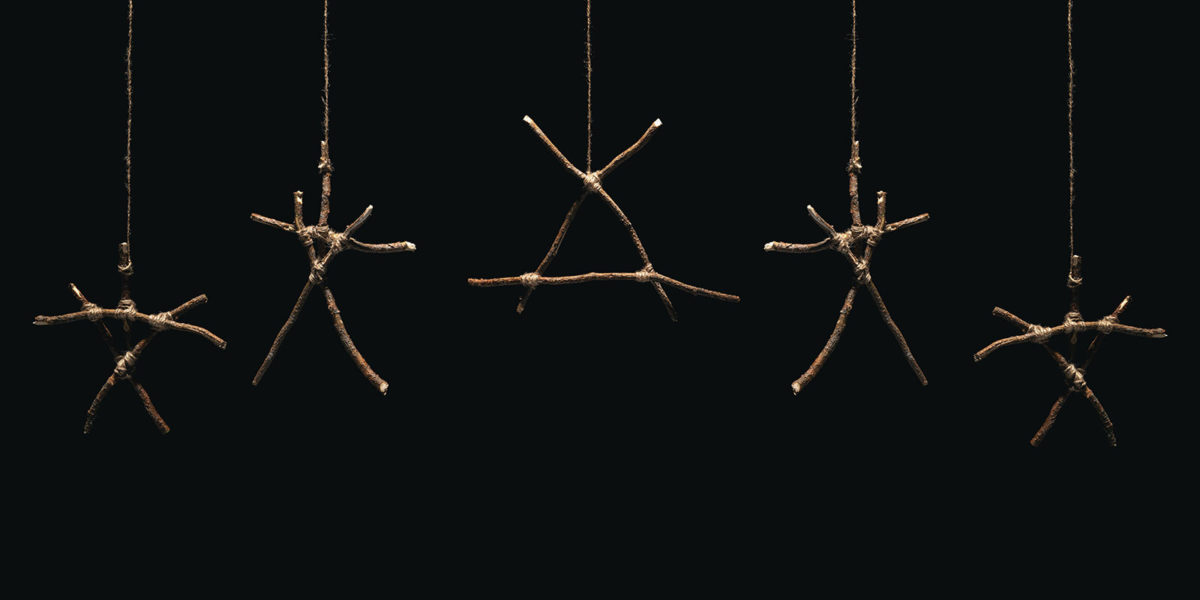The “On the Verge” series at Puzzle Box Horror is all about highlighting horror authors who are standouts in various genres. Some of these authors are bigger names in the industry, but many of them are indie writers who publish through small presses or self-publish. The point is to emphasize these fine folks and their contribution to a specific genre, enlightening the reader while also bringing attention to the authors and their work.
In our last post in the series we focused specifically on authors who write in the folk horror genre. Because the genre is such a favorite of ours, and because there are just so many great stories in this category, we decided to put together a second article featuring additional authors. So prepare to dive back into the realm of isolation, folklore, and supernatural mystery as we present six authors of folk horror you need to be reading!
Adam Nevill
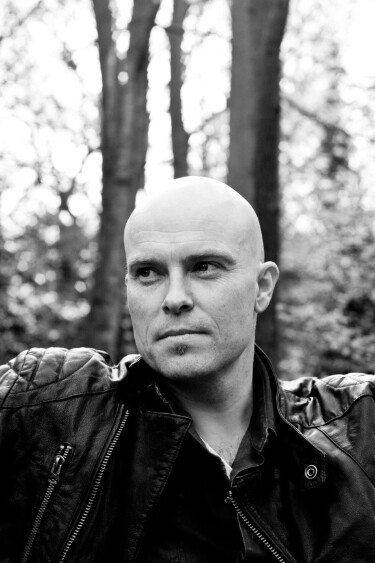
Adam L.G. Nevill was born in Birmingham, England, in 1969 and grew up in England and New Zealand. He is an author of horror fiction. Of his novels, The Ritual, Last Days, No One Gets Out Alive and The Reddening were all winners of The August Derleth Award for Best Horror Novel. He has also published three collections of short stories, with Some Will Not Sleep winning the British Fantasy Award for Best Collection, 2017. Imaginarium adapted The Ritual and No One Gets Out Alive into feature films and more of his work is currently in development for the screen. The author lives in Devon, England.
1. Tell us a bit about yourself and what got you started in horror writing?
I’m a British writer of horror. This year’s novel, Cunning Folk, will be my tenth novel published and I have three short story collections available too. Since my Dad read me the ghost stories of M. R. James when I was a child, horror has always been the fiction I’ve wanted to write and the field that I’ve wanted to contribute to. I’ve been writing horror since 1995 and my short fiction was first published in 2003, my first novel, Banquet for the Damned, in 2004. I’m a horror lifer and an enthusiast for horror in fiction, film and comics. I pretty much set my goal on becoming a horror writer in my mid-teens, way back in the 1980s.
My break to the next level from the underground of small presses and series fiction to the international publishers happened in 2009, when my second and third novels were taken on by Pan MacMillan in the UK. They were Apartment 16 and The Ritual. Horror had been out of vogue for a long time in publishing, but when it returned to favour, a door opened.
I am now in my third decade as a writer of horror. It took me ten years to complete the first three novels so it’s been a slow, steady evolution for my career. I now have my own imprint for some of my titles, Ritual Limited, and two of my novels have been adapted into films. No One Gets Out Alive will be out this year on Netflix. The Ritual was the first film adapted from my novel of the same name.
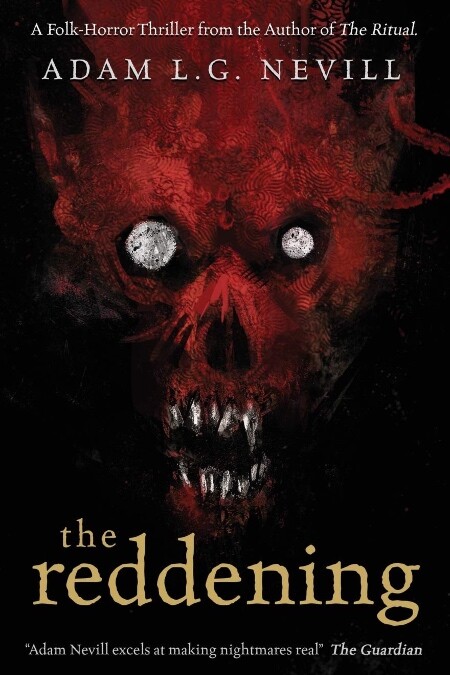
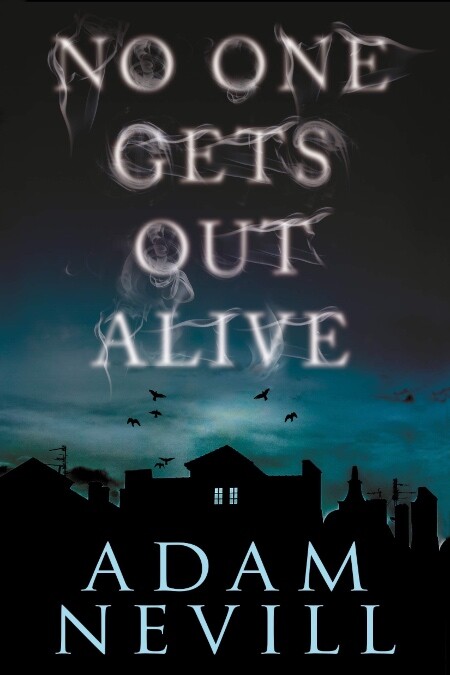
2. We talk to a fair amount of new writers. What tips would you give yourself if you could go back to when you started based on what you know now?
I developed as a writer within the old, traditional route: you had to get an agent to even get a publisher to read a line of your work. It took me 11 years to find an agent. There was no indie publishing as we know it today, or Amazon KDP, hardly any small presses, the internet was small or non-existent etc. But I guess, I’d tell my younger self not to despair so much during the first 15 years, nor to be so extreme about my mission. My endeavours seemed futile for a long time and yet I remained driven – the way of angst. Flipside, I never gave up and focused on what was important – reading, studying writing and, of course, writing more.
I’d mainly insist that my younger self be better informed about publishing and the book trade and how the business works. I didn’t really start figuring that out until 2005, when I became a fiction editor. But the basics of becoming a writer I’d mercifully grasped in adolescence: to read the best writers in the field and to read widely beyond horror. Learning to rewrite early on was transforming for my work too.
3. What are some of your favorite aspects of the folk horror genre?
I’ve always found elements of folk stories, folk culture and pagan mythology equally enthralling and grotesque – it’s that combination of mystery and the ghastly that drew me in imaginatively. Particularly certain details that seem almost credible, as if folklore has a basis in something intangible but genuinely supernormal.
In Great Britain we’ve no end of ghost stories and a long tradition of believing in witchcraft, hauntings and curses. I’m surrounded by inspiration; a sense of ancient presences, pagan deities, charmed locales that can influence the human mind and even whole communities. So much of a strange and unknowable past is buried in this island. Much of it no one understands so it’s enigma is appealing; so the idea of the present being affected by what is hidden or misunderstood or obscured by time appeals to me.
I live by two cave systems that contained treasure troves of prehistoric artefacts; I can see the scars of the last ice ages on the landscape around my home; and almost anywhere you go in Britain, you will see vestiges and relics of a darker and more superstitious time. This really distilled in my novel, The Reddening.
So, I guess my favourite aspect of folk horror would be its aesthetic, be it ancient or modern.
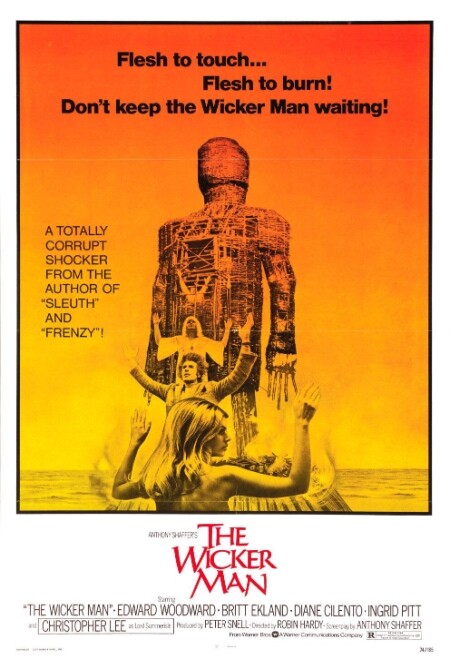
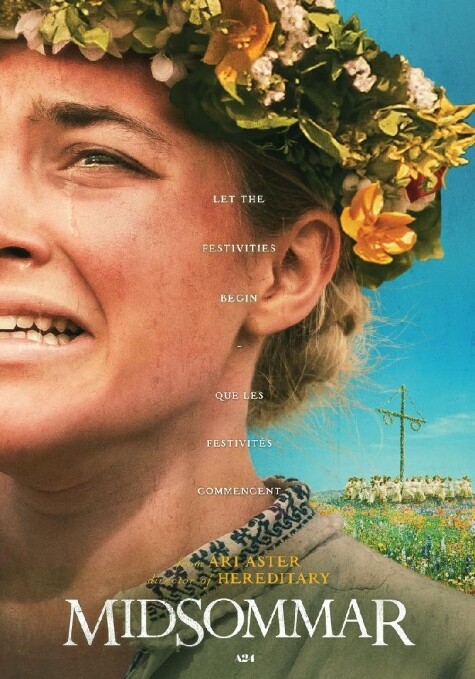
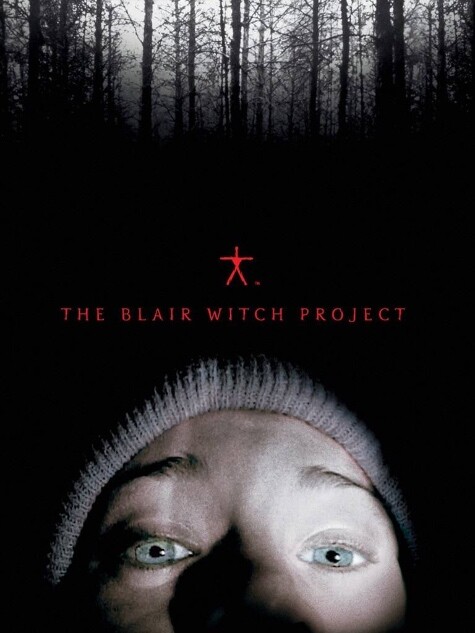
4. What are your top three favorite folk horror books (and/or films)?
I’ll go with film: The Wicker Man, Midsommar & The Blair Witch Project.
If you’re interested in learning more about Adam Nevill, check out his website at www.adamlgnevill.com. You can also follow the author on Twitter (@AdamLGNevill), Instagram (@adamlgnevill), and Goodreads (@Adam_Nevill). Finally, to purchase books check out the author on Amazon.
William Meikle
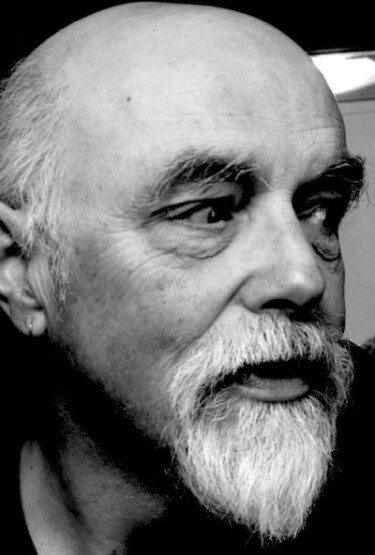
William Meikle is a Scottish writer, now living in Canada, with more than thirty novels published in the genre press and over 300 short story credits in thirteen countries. He has books available from a variety of publishers including Dark Regions Press, Crossroad Press and Severed Press, and his work has appeared in a number of professional anthologies and magazines. He lives in Newfoundland with whales, bald eagles and icebergs for company. When he’s not writing he drinks beer, plays guitar, and dreams of fortune and glory.
1. Tell us a bit about yourself and what got you started in horror writing?
I write to escape.
I grew up in the sixties and seventies on a West of Scotland council estate in a town where you were either unemployed or working in the steelworks, and sometimes both. Many of the townspeople led hard, miserable lives of quiet, and sometimes not so quiet, desperation. I was relatively lucky in that both my parents worked, but I spent a lot of time alone or at my grandparent’s house.
My Granddad was housebound, and a voracious reader. I got the habit from him, and through him I discovered the Pan Books of Horror and Lovecraft, but I also discovered westerns, science fiction, war novels and the likes of Mickey Spillane, Ed McBain, Alistair MacLean, Dennis Wheatley, Nigel Tranter, Arthur C Clarke and Isaac Asimov. When you mix all that together with DC Comics, Tarzan, Gerry Anderson and Dr Who then, later on, Hammer and Universal movies on the BBC, you can see how the pulp became embedded in my psyche.
When I was at school these books and my guitar were all that kept me sane in a town that was going downhill fast. The steelworks shut and employment got worse. I -could- have started writing about that, but why bother? All I had to do was walk outside and I’d get it slapped in my face. That horror was all too real.
So I took up my pen and wrote. At first it was song lyrics, designed (mostly unsuccessfully) to get me closer to girls.
I tried my hand at a few short stories but had no confidence in them and hid them away. And that was that for many years.
I didn’t get the urge again until I was past thirty and trapped in a very boring job. My home town had continued to stagnate and, unless I wanted to spend my whole life drinking (something I was actively considering at the time), returning there wasn’t an option.
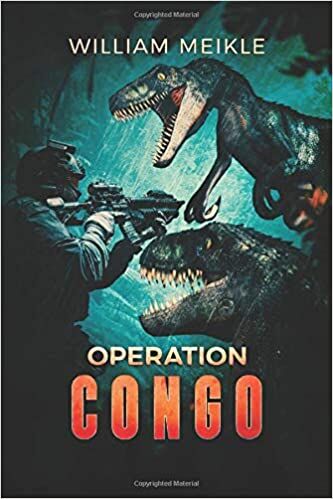

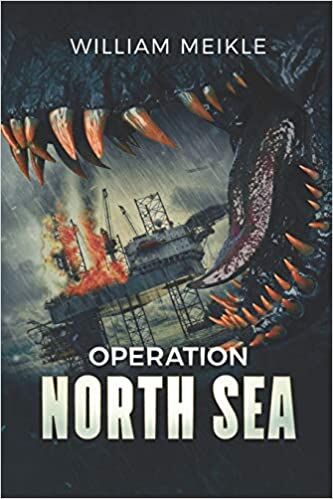
My brain needed something, and writing gave it what was required. That point, back thirty years ago, was like switching on an engine, one that has been running steadily ever since.
It’s been a slow and steady progression, from UK small press pay in copies markets for much of the nineties, to getting a novel published in the USA in 2001, then starting to hit the pro short story market, and finding a home for novels with the higher end small presses. I went full time in 2007 and I’ve now got over 30 novels, a whole load of novellas and over 300 short stories in print, including a success story in my current S-Squad series where a bunch of sweary Scottish squaddies fight a ‘monster of the week’ in each book. (I’ve managed to shoehorn in some folklore, Scottish stuff in particular)
2. We talk to a fair amount of new writers. What tips would you give yourself if you could go back to when you started based on what you know now?
Two things:
I’d have started earlier. I didn’t get going until i was 34ish, and now regret leaving it so late. If you want to be a writer, you have to write. That’s the simplest yet best advice you’ll get.
The other thing is to develop a thick skin. Rejection doesn’t mean you’re crap, just that you sent the wrong thing to the wrong editor at the wrong time. Keeping your bum in your chair and keeping going is the best way to cope with it.
3. What are some of your favorite aspects of the folk horror genre?
I love the sense of deep time. It’s something I miss since leaving Scotland. I have a deep love of old places, in particular menhirs and stone circles, and in the past I’ve spent quite a lot of time travelling the UK and Europe just to visit archaeological remains in places like Orkney, Salisbury Plain, Carnac, Malta and Crete.
I also love what is widely known as “weird shit”. I’ve spent far too much time surfing and reading Fortean, paranormal and cryptozoological websites. The cryptozoological stuff that’s embedded, particularly in Celtic folklore with its tales of kelpies, selkies, black dogs and lake monsters especially fascinates me, and provides a direct stimulus for a lot of my fiction.
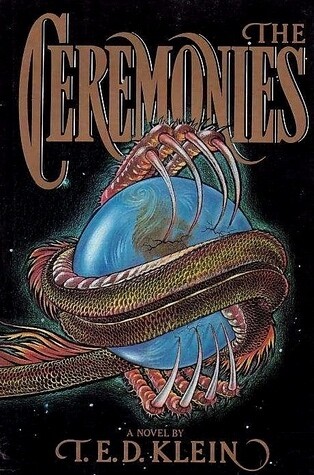
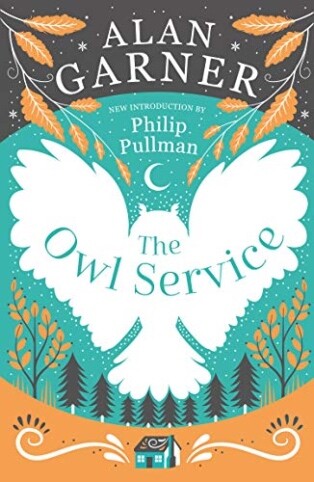
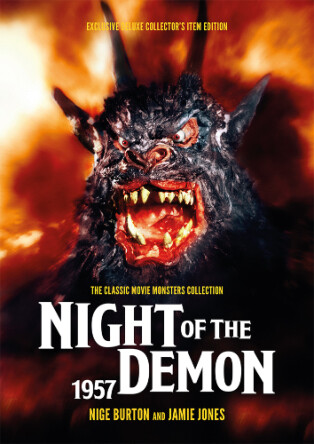
4. What are your top three favorite folk horror books (and/or films)?
Books:
- The Ceremonies by T.E.D Klein – the masterpiece of the genre. I learn something new from it with each reading
- The Owl Service by Alan Garner – fifty years plus on from my first reading and it’s still as tight and unsettling as ever
- “Sticks” by Karl Edward Wagner – OK, it’s a short story, but its just about the best folklore related fiction there is
Films:
- The Wicker Man – oft imitated, never bettered
- The Witch – my favorite of the recent bunch purely for the consistency of vision. A remarkable work.
- Night of the Demon – my all time favorite, and the thing that hooked me on the genre all those years ago.
If you’re interested in learning more about William Meikle, check out his website at www.williammeikle.com. You can also follow the author on Twitter (@williemeikle), Instagram (@williammeikle4595), and Goodreads (@William_Meikle). Finally, to purchase books check out the author on Amazon.
Tracy Fahey
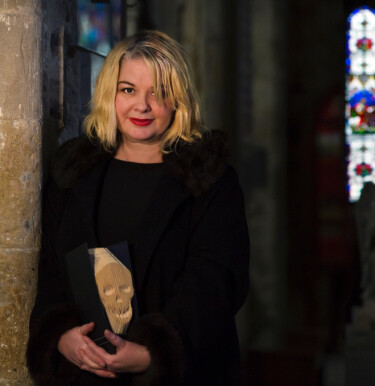
Tracy Fahey is an Irish fiction writer. In 2017, her debut collection The Unheimlich Manoeuvre was shortlisted for a British Fantasy Award for Best Collection. She has published two further collections; New Music For Old Rituals (2018, Black Shuck Books) and I Spit Myself Out (2021, Sinister Horror Company) and one novel, The Girl in the Fort (2017, Fox Spirit Books).
Fahey’s short fiction is published in over thirty American, British, Australian and Irish anthologies including Stephen Jones’ Best New Horror, Nightscript V, and Uncertainties III, and her work has been reviewed in the TLS and Black Static. In 2019, her short story “That Thing I Did” received an Honourable Mention from Ellen Datlow in The Best Horror of the Year Volume Eleven.
Fahey holds a PhD on the Gothic in visual arts, and her non-fiction writing on the Gothic and folklore has appeared in Irish, English, Italian, Dutch and Australian edited collections. Her writing has been commissioned by visual artist Marie Brett and the Crawford College of Art. She has been awarded residencies in Ireland and Greece.
1. Tell us a bit about yourself and what got you started in horror writing?
Horror has always fascinated me; even as a child I was enthralled by stories my grandmother told me about local dark folklore—tales of the banshee, ghosts and other supernatural occurrences. My very first job (when in school) was writing and doing readings of my own short stories on a local radio station. Those stories borrowed heavily (and unapologetically) from authors who intrigued me, Edgar Allan Poe, Guy de Maupassant, Ray Bradbury…and the writers of Misty, the British paranormal comic for girls. So my roots in horror came from folklore, storytelling, reading and writing.
However, life intervened, and for a few decades I focused on work, teaching and writing on visual arts and design. But my allegiance to horror deepened, and after a severe illness which left me in recovery mode for about a year, I started to tentatively write. I was drawn towards one of my obsessions, the idea of the dark home and its roots in Irish culture. And from this source I began to write short stories which found homes in several anthologies by Fox Spirit Press, Hic Dragones, Dark Minds Press and other small presses. Three years later, I had finished my PhD (on the Gothic home in Irish visual art) and my first collection, The Unheimlich Manoeuvre, which was published in 2016 by Boo Books, and has been reprinted twice by the Sinister Horror Company; in 2018 and again, in a deluxe edition, in 2020.
Five years later, I’ve written several more books, two of them explicitly exploring folk horror – my YA novel The Girl In The Fort (2017, Fox Spirit Press) and my second collection, New Music For Old Rituals (2018, Black Shuck Books) – and a third collection on female body horror, I Spit Myself Out (2021, Sinister Horror Company).
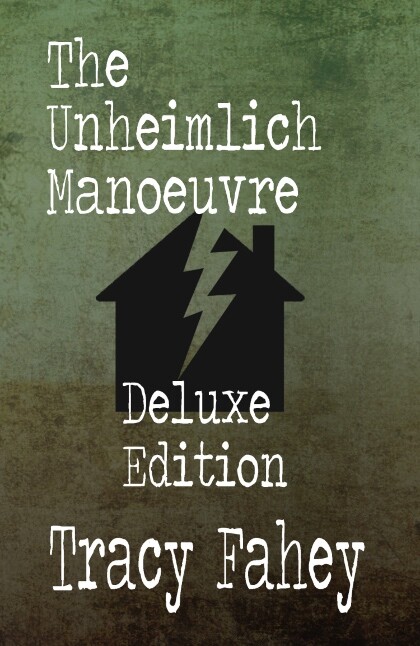


2. We talk to a fair amount of new writers. What tips would you give yourself if you could go back to when you started based on what you know now?
Read everything. Although the primary genres I write in are the Gothic and folk horror, I have very catholic tastes. I read omnivorously, and always have. It’s through reading you find what you admire, that you find new ways to write. And because I read across genres, it gives me a bigger lens through which to analyse the writing of others—seeing what works and what doesn’t.
Write without fear, and write what you love. Tap in to what obsesses you. For me it this continues to be ideas of liminality, the uncanny, the body, and dark folklore. Explore it. Write authentically. Write what you’d like to read. Find your comfort medium; poetry, short stories, novellas, novels. And when you find your narrative, your medium and your voice, just experiment with writing out these passions and finding different ways to do it.
Submit. I can’t emphasise this one strongly enough. Although you start writing for an audience of one—yourself—it’s so wonderful to have your writing read by others. You learn so much from editors, from reviewers. Sure, it takes courage to send work out (and stamina to deal with rejection) but the simple joy of being published and having your work in the public eye is magical. And when you submit, always be mindful of what editors want, how they want it formatted, and be polite and gracious whether work is accepted or not. There are some excellent websites out there such as Submissions Grinder and The Horror Tree which advertise upcoming submission genre opportunities.
Go to conventions. Another game-changer for me was discovering the British genre scene through conventions. It’s where I met my tribe, people I have subsequently worked with, edited with, written with, and, most importantly, become friends with. It’s not only where you network but where you genuinely connect with others who are on a similar mission.
3. What are some of your favorite aspects of the folk horror genre?
That’s a difficult question, as this is one of the genres I’m most drawn to and researched most fully. In 2020 I taught a seminar programme on the Folk Horror Revival in Limerick School of Art and Design. This winter I’m delivering a workshop on Crafting Contemporary Folk Horror at the forthcoming UK Ghost Story Festival which will run in Derby this November 26 th -28 th (for more information on this follow @UKGSFestival on Twitter).
But as a writer, and as an Irish writer, my favourite aspect of folk horror is the idea of reinventing and reinterpreting the folklore of my home country. I have a huge interest in my native Irish folklore since I was a child, and through my academic research I’ve spent a lot of time researching legends, customs and superstitions to do with the home. In my own work I borrow from folklore as inspiration, but the twist I take on it is contemporary. I believe that folklore teaches us a lot about values and community, and I welcome the current folk horror revival which brings a renewed focus to the idea that stories have value, that stories can act as warnings, cautionary tales.
I’m interested primarily in my own cultural history and the idea of connecting to my heritage through folk horror. Although the legends and stories of other cultures fascinate me, I’m aware that I don’t want to appropriate or misuse tropes from other histories. But within my own culture I’m continually learning more about the way folklore changes and reinvents itself. And because Irish folklore is one of the richest in the world due to its flourishing under colonial rule, it’s a never-ending source of inspiration.
I’m also fascinated by ideas of transmission and legacy through storytelling. I’m living proof of how folklore operates in that regard; many of my seminal influences date back to a childhood spent listening to stories. As I don’t have children, writing my interpretation of folklore is one of the ways in which I feel I can actively contribute to the continued growth and diversity of the Irish contemporary folk tradition.
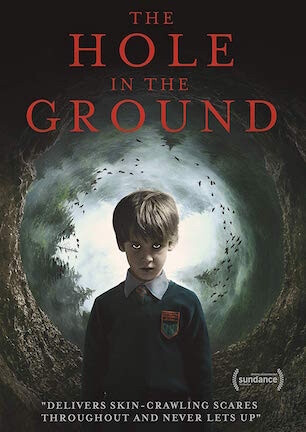

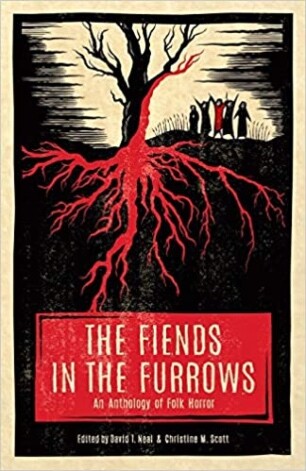
4. What are your top three favorite folk horror books (and/or films)?
One of my favourite folk horror movies is Ari Aster’s 2019 Midsommar. I’m very interested in contemporary takes on folk horror, and I found this movie intensely satisfying. It keeps true to the tropes of folk horror – outsiders come to a remote community that operates under its own moral imperatives, the importance of tradition, and the necessity of sacrifice for the greater good – but this movie is also outstanding in the way that it becomes an avenue to explore themes like loss and the importance of community. Unlike many horror movies it doesn’t rely on the helpful adjuncts of darkness or jump-scares, instead utilising precepts of the uncanny to create an evocative and intense viewing experience. Furthermore (and without spoiling the movie) it also speaks to ideas of redemption and reconnection. And every time I watch it, I find a different layer, deeper resonances. In terms of folk horror film, also I love Robin Hardy’s 1973 The Wicker Man, and the work of Ben Wheatley – especially Kill List (2011). Special mention also for the 2019 low-key Irish folk horror movie, directed by Lee Cronin, The Hole In The Ground.
Next up on my list is a 2017 non-fiction book by Adam Scovell, Folk Horror: Hours Dreadful and Things Strange, which looks at the roots of folk horror and explores ways in which folk horror has expressed and continues to express itself in different media. It’s a fascinating primer on what the genre is and how it has been explored by various creative practitioners. In terms of non-fiction collections of Irish dark folklore, I’d strongly recommend Meeting The Other Crowd by Carolyn Eve Green and Irish storyteller Eddie Lenihan.
In terms of fiction, we’re spoiled for choice, but I’m going to single out Eden Royce’s 2015 Spook Lights: Southern Gothic Horror. Eden draws upon her rich Gullah/Geechee heritage to craft visceral horror stories through her lyrical writing and use of sensual language. I’m very much looking forward to reading her 2021 Root Magic, which takes the same source but focuses on ideas of childhood, tradition and, of course, root magic. I also love Steve Toase’s excellent 2021 folk horror collection, To Drown In Dark Water, which showcases his own background and interest in archaeology and folklore, and Priya Sharma’s beautiful collection, All The Fabulous Beasts, which deftly plays with international folk motifs and archetypes using her trademark evocative prose. Special praise also for Nosetouch Press and their folk horror anthologies, The Fiends in the Furrows (2018) and The Fiends in the Furrows II (2020).
If you’re interested in learning more about Tracy Fahey, check out her website at www.tracyfahey.com. You can also follow the author on Twitter (@TracyFahey) and Goodreads (@Tracy_Fahey). Finally, to purchase her books check out the author on Amazon.
Catherine Cavendish
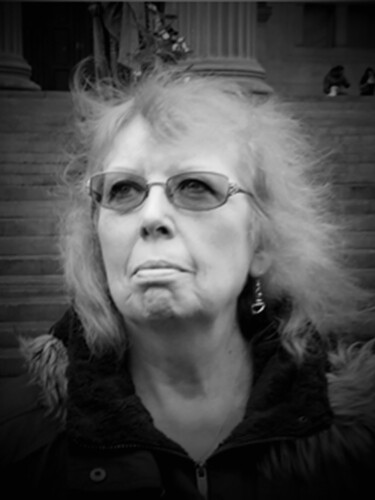
Catherine Cavendish is a writer of horror fiction – frequently with ghostly, supernatural, Gothic and haunted house themes. Her latest novel – In Darkness, Shadows Breathe – is published by Flame Tree Press, as well as the two previous novels The Garden of Bewitchment and The Haunting of Henderson Close. Her latest novella – The Malan Witch – is now out from Silver Shamrock Publishing. Catherine’s Nemsis of the Gods trilogy is out now from Kensington-Lyrical, and she’s had numerous novellas and novels published by Crossroad Press. She lives with a long-suffering husband and a delightful black cat who has never forgotten that her species used to be worshipped in ancient Egypt. When not slaving over a hot computer, she enjoys wandering around Neolithic stone circles and visiting old haunted houses.
1. Tell us a bit about yourself and what got you started in horror writing?
I have been writing since I could hold a pencil in my chubby toddler paw. Then it was mostly utter rubbish and balderdash – well, if I’m entirely honest, mainly squiggles. Then I learned how to read and write properly and we had these English lessons at school where we were required to write essays. Now, the other kids used to groan when faced with an essay to compose. Me? I would have shouted “Bring it on” if people did indeed shout that at the time. I settled for the more commonly used “Groovy” instead. (Yes, I am THAT old).
The years passed, I left school, went to work, read loads. Found my favourite fiction genres were Historical, Crime and… you guessed it…Horror. I continued to write, but essays had long given way to short stories and novels. I went through the gamut of romance, children’s, historical, and crime but found increasingly that everything I wrote tended toward the ghostly, supernatural and horror. From there it was a short step into writing my first horror novel. Ironically it could be described as folk horror as it centred on the ancient stone circles at Avebury in Wiltshire. This story was never published and has been lost along the way, but I learned a lot from writing it – significantly that of all the genres I had attempted, horror was my far and away favourite.
Some years later, an editor agreed with me, and I signed my first publishing contract.
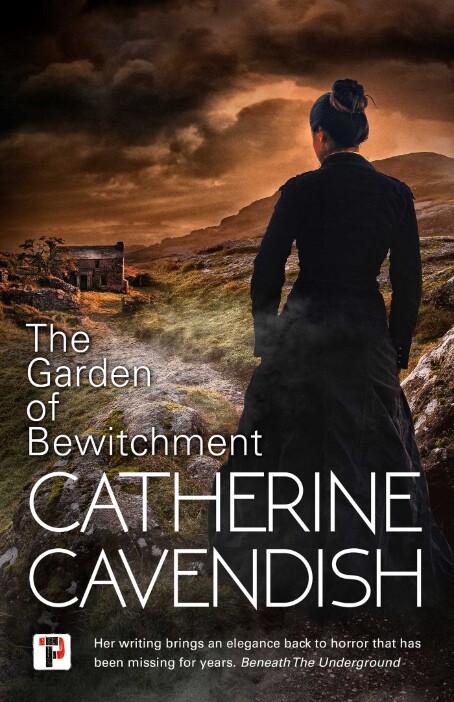
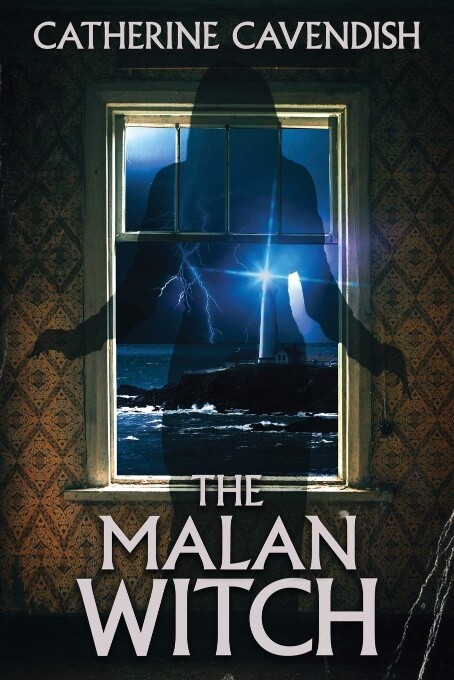
2. We talk to a fair amount of new writers. What tips would you give yourself if you could go back to when you started based on what you know now?
Read. Read, Read. Now this is a lesson I learned very early on. If you want to write in a particular genre, make sure you’ve read extensively in it. Make sure you know what works and what doesn’t. Focus on authors who you admire and read their work critically. What is it that hooks you in? What keeps you reading? How can you make your dialogue sound realistic (quick tip – read it out loud as if you are rehearsing a play). Look at how they manipulate the rules of language to improve the story, quicken or slow down the pace. Also read other genres. In other words, learn your craft.
Remember a first draft is merely that. The first draft. Once it’s down on paper, that’s when the real writing begins. Whoever said “novels aren’t written, they’re rewritten” knew their stuff.
Get a first-class beta reader (or more if you prefer). This should be someone who is literate, knows how to craft a good story and is a reader in your genre – in other words, your target market. When they offer constructive criticism, take it on the chin. You’re going to need the hide of a rhino so might as well start now.
And of course, be tenacious. If you are writing what you love and loving what you write, as well as continuing to grow as a writer, chances are that one day someone is going to like what you do enough to take a chance on you.
3. What are some of your favorite aspects of the folk horror genre?
The sheer breadth, scope and variety out there. So many wonderfully different stories have been woven around the folklore myths and legends surrounding Mothman, Big Foot , the Green Man, Salem, Pendle and much, much more. I particularly find myself drawn to Asian tales handed down through generations and involving some pretty gruesome creatures and ghosts. Myths and folklore from around the world have provided the inspiration for a host of films such as The Curse of La Llorona, The Ring, The Wicker Man and a host of others.
I also love the way that, with such a wealth of extraordinary material existing out there, it is still possible to successfully create your own folk horror myth. The Babadook is but one example of this and Adam Nevill’s The Ritual and The Reddening are others. As a folk horror writer, you are never short of ideas once you tap into folklore and let your imagination do the rest.
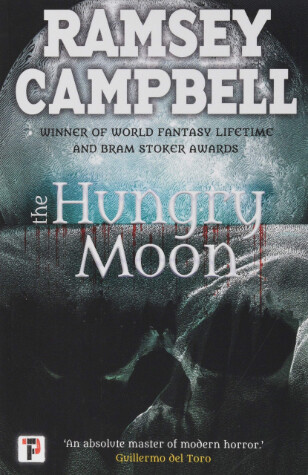
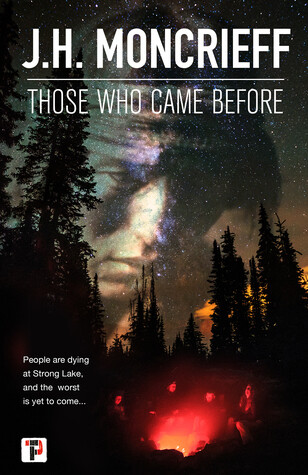
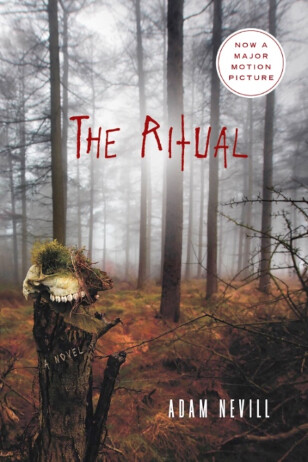
4. What are your top three favorite folk horror books (and/or films)?
This is a tough one because there are so many. I’ll stick with books because the minute I add films into the equation, my head explodes.
One of my favourite horror authors is the great Ramsey Campbell who has the ability to craft superb folk horror tales of which there are many examples throughout his long career to date. It’s tough to choose just one but I’ll settle on The Hungry Moon.
J.H. Moncrieff is a Canadian writer who has been emerging as a real talent, taking a creepy folklore tradition and turning it into a scary, twisted folk horror tale. One outstanding example I have loved recently is Those Who Came Before.
I couldn’t leave Adam Nevill out. His writing and ability to weave a twisted, frightening tale keep me awake at night. As with the other two, he has a number of examples of great stories within the folk horror tradition. I know I’ve mentioned it before but I’ll pick The Ritual which, if I were also to include folk horror films, would almost certainly make the cut. Read the book first though!
If you’re interested in learning more about Catherine Cavendish, check out her website at www.catherinecavendish.com. You can also follow the author on Twitter (@Cat_Cavendish), Instagram (@catcavendish), and Goodreads (@Catherine_Cavendish). Finally, to purchase her books check out the author on Amazon.
Tony Evans

Tony Evans is a crafter of horror and dark fiction, father, wildlife biologist, and member of the Horror Writers Association. Originally from the Appalachian foothills of eastern Kentucky, Tony grew up listening to stories about mountain monsters and holler witches, and his love for these folktales shows in his writing. While he enjoys all types of horror, he definitely has a hard preference for stories about dark entities, demons, witches, and boogeymen. Tony has published over twenty short horror stories in various online and print anthologies and magazines to date. His debut short story collection – Better You Believe – was released in February of 2019, and his debut novel – Sour – was released in October of 2019. He currently lives in New Albany, Indiana where he spends his time coming up with bad story ideas and trying to entertain his wife and two young daughters – his favorite little monsters.
1. Tell us a bit about yourself and what got you started in horror writing?
Well, my name is Tony Evans (not the preacher…haha) and I was born and raised in Eastern Kentucky in the foothills of the Appalachian mountains. When I was about four years old, my dad started telling me stories about “holler witches”, Bloody Bones, and mountain monsters and I guess those stories just kinda stuck.
As I grew older and started traveling outside of the area, I found that people not familiar with the region really seemed to enjoy when I would retell all of those old tales from the mountains, and so I decided to start writing them down. I guess I just wanted to tell the stories that my dad told to me as a child in the hopes that someone else found them just as fun and fascinating as I did and still do.
2. We talk to a fair amount of new writers. What tips would you give yourself if you could go back to when you started based on what you know now?
If I could go back in time, I think I would give myself two pieces of advice regarding writing.
First, I would tell myself that rejection is not a bad thing. It happens to EVERYONE who writes. No matter how good you think that story you’re writing is, and no matter how much you work on it and do everything you can to get it in the best possible shape it can be in before you submit it…chances are that it, or another one you send, will get rejected. It’s just a part of the game. I’ll never forget the first short story I ever did. I was absolutely sure it would be a huge hit. I’d send it in (to a very well known small press, actually), the editor would fall all over themselves trying to buy it from me, and I’d get rich! Boy, was I wrong! However, the editor was kind enough to give me some pointers on my mistakes, and there were many, free to sort of help me along. Since then he and I have become pretty good friends. I’ve still not sold that story, come to think of it…but it’s going in a collection I’m putting out in a month or so. Point is, rejection happens to everyone, and it helps you grow as a writer.
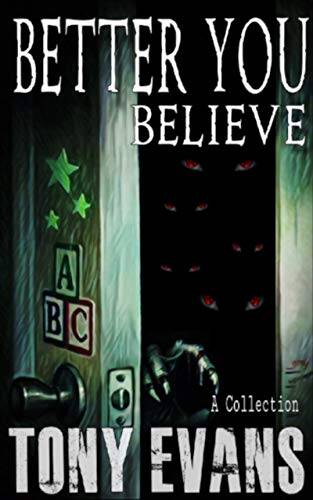
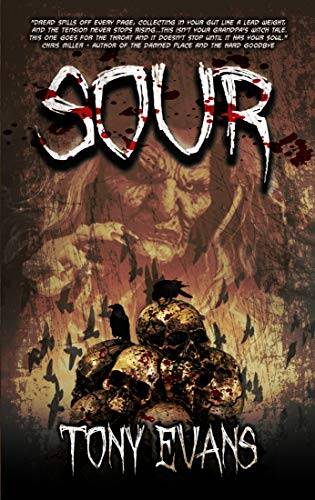
The second piece of advice, and this one I’ve found to be very important, I got from a talk given by one of the masters of short fiction, Ray Bradbury. During his keynote address of the Sixth Annual Writer’s Symposium by the Sea, Bradbury said, and I quote, “Get rid of those friends of yours who make fun of you and don’t believe in you. When you leave here tonight, go home, make a phone call, and fire them. Anyone who doesn’t believe in you and your future, to hell with them.”. To this day, this quote makes me cry. It’s so important to surround yourself with people who believe in you and want you to succeed. I think a lot of writers are pushed away from what they love because someone in their family or some of their so called friends say things like, “that’s a fun little hobby, but…”, or “well, that sounds cute, but what do you do for a real job?”. So, as Ray Bradbury said, I’d tell my younger self to hell with them!
3. What are some of your favorite aspects of the folk horror genre?
I typically look at folk horror as something rooted in folklore/local urban legends and/or something that’s sort of derived from traditional religious backgrounds, magic, or witchcraft in general. The way that folklore, even in today’s modern age, persists in spite of all the technological and scientific advances is just amazing in my opinion. I always tell people that I don’t believe in any of that stuff, and I consider myself agnostic…but I can remember that even as a child I was scared to death that I’d walk through my house and see Jesus standing there. Very irrational, I know, as Jesus is supposed to be a symbol of good. It’s the thought of seeing something I can’t explain that scared me, and still kinda does. I guess that means that I have to believe in something, deep down, perhaps.
So my favorite aspect of folk horror is how the stories linger, the way they persist throughout the years no matter what, and the fact that the whole genera sort of falls in a realm where science can’t prove or disprove the content’s existence…kinda like the twilight zone. That has always fascinated me.
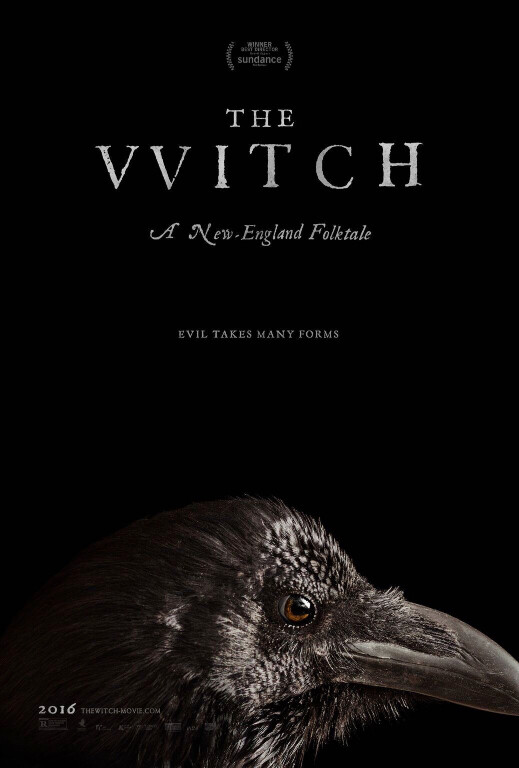
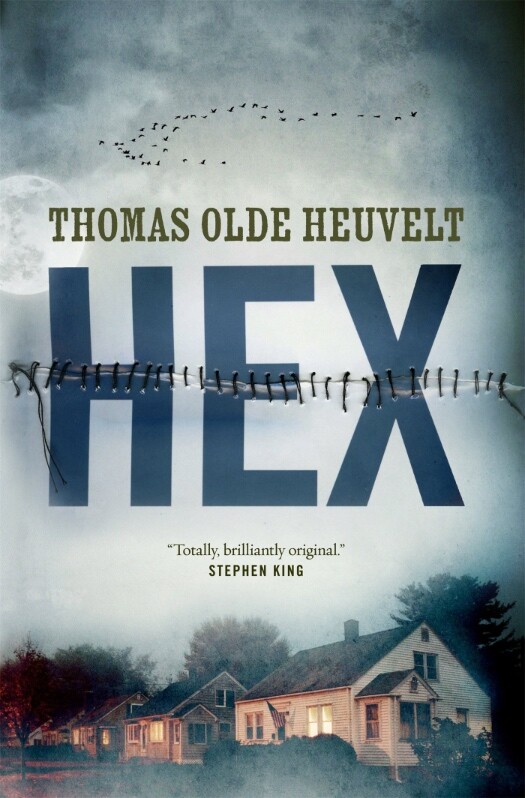
4. What are your top three favorite folk horror books (and/or films)?
- The VVitch – hands down one of my favorite movies of the last 50 years.
- The Ritual by Adam Nevill, both the book and the movie – a fantastic modern-day folk horror story.
- HEX by Thomas Olde Heuvelt – one of the best witch books written. This novel is a fantastic blend of aged traditions and modern-day society.
If you’re interested in learning more about Tony Evans, check out his website at www.tonyevanshorror.com. You can also follow the author on Twitter (@TonyEvansHorror), Instagram (@tonyevanshorror), and Goodreads (@Tony_Evans). Finally, to purchase books check out the author on Amazon.
Mary Rajotte

Canadian author Mary Rajotte has a penchant for penning nightmarish tales of folk horror and paranormal suspense. Her work has been published in a number of anthologies and she is currently querying her first novel. Sometimes camera-elusive but always coffee-fueled, you can find Mary at her website http://www.maryrajotte.com or support her Patreon for exclusive fiction at patreon.com/maryrajotte.
1. Tell us a bit about yourself and what got you started in horror writing?
As one of the resident Goths at my high school, it’s no surprise that my first dark writing was poetry. In my last year, I took a Writer’s Craft class where I wrote a vampire story inspired by Anne Rice and that’s when I realized I wanted to write for a living. My paternal grandmother was a writer. Her stories were more literary tales about her life growing up, but I’ve always been inspired by her and her drive to continue writing, even after her health declined.


2. We talk to a fair amount of new writers. What tips would you give yourself if you could go back to when you started based on what you know now?
Don’t be afraid to experiment and let go of the reins a bit. I still have trouble with that myself. I’m a plotter by nature but I sometimes feel I can be a little too rigid so I’m trying to follow my writerly instincts more and allow myself to have more fun. I also encourage new writers to continue honing their craft by trying new things and embracing their interests. Now that I have fully embraced my own love for folklore, superstitions and darker themes, I feel I have found my voice.
3. What are some of your favorite aspects of the folk horror genre?
I love superstition and folklore not just for the stories but the reasoning behind them. I’ve come across some of the strangest tales that make me wonder why people believed them. And there’s pretty much a superstition for everything! Like, who ever came up with the idea that taking a tooth from a dead man’s skull and wearing it on your person would prevent toothaches? Or burying the hair cut from the head of an ill person in the ground would cause their sickness to molder away in the earth and they would be cured? These little seeds are just the thing to inspire the types of strange tales I love to tell.
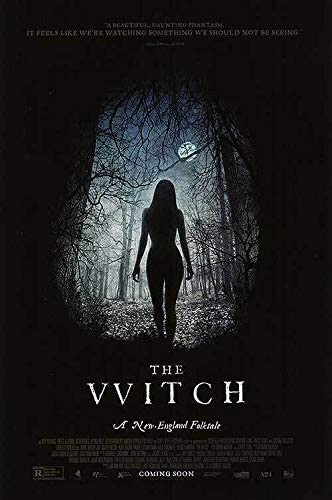
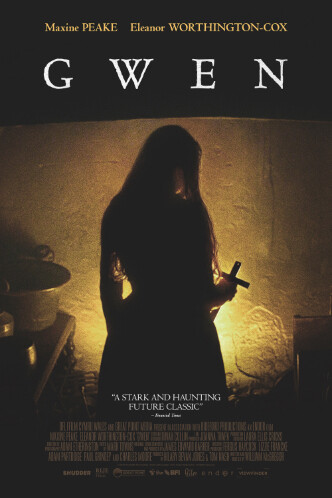
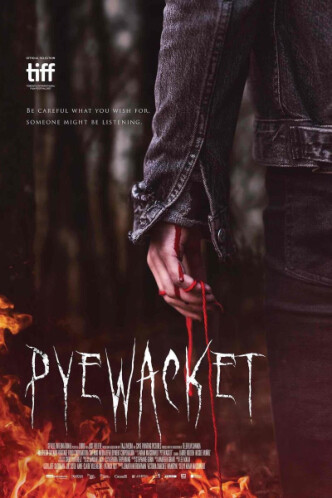
4. What are your top three favorite folk horror books (and/or films)?
One of my favorite modern anthologies is The Fiends in the Furrows from Nosetouch Press. It had all the classic folk horror elements – isolation, strange arcane rituals and paranoia, all with a modern twist.
For movies, I loved The Witch, Gwen and Pyewacket. They all have a similar tone, that sense of dread that lurks over the characters, and misfortune that they can’t seem to escape. The cool thing is that even though the first two are similar, Pyewacket is a great example that folklore and the occult can take place in a modern setting and still be unsettling.
If you’re interested in learning more about Mary Rajotte, check out her website at www.maryrajotte.com/blog. You can also follow the author on Twitter (@MaryRajotte), Instagram (@maryrajotte), and Goodreads (@Mary_Rajotte). Finally, to purchase her books check out the author on Amazon.
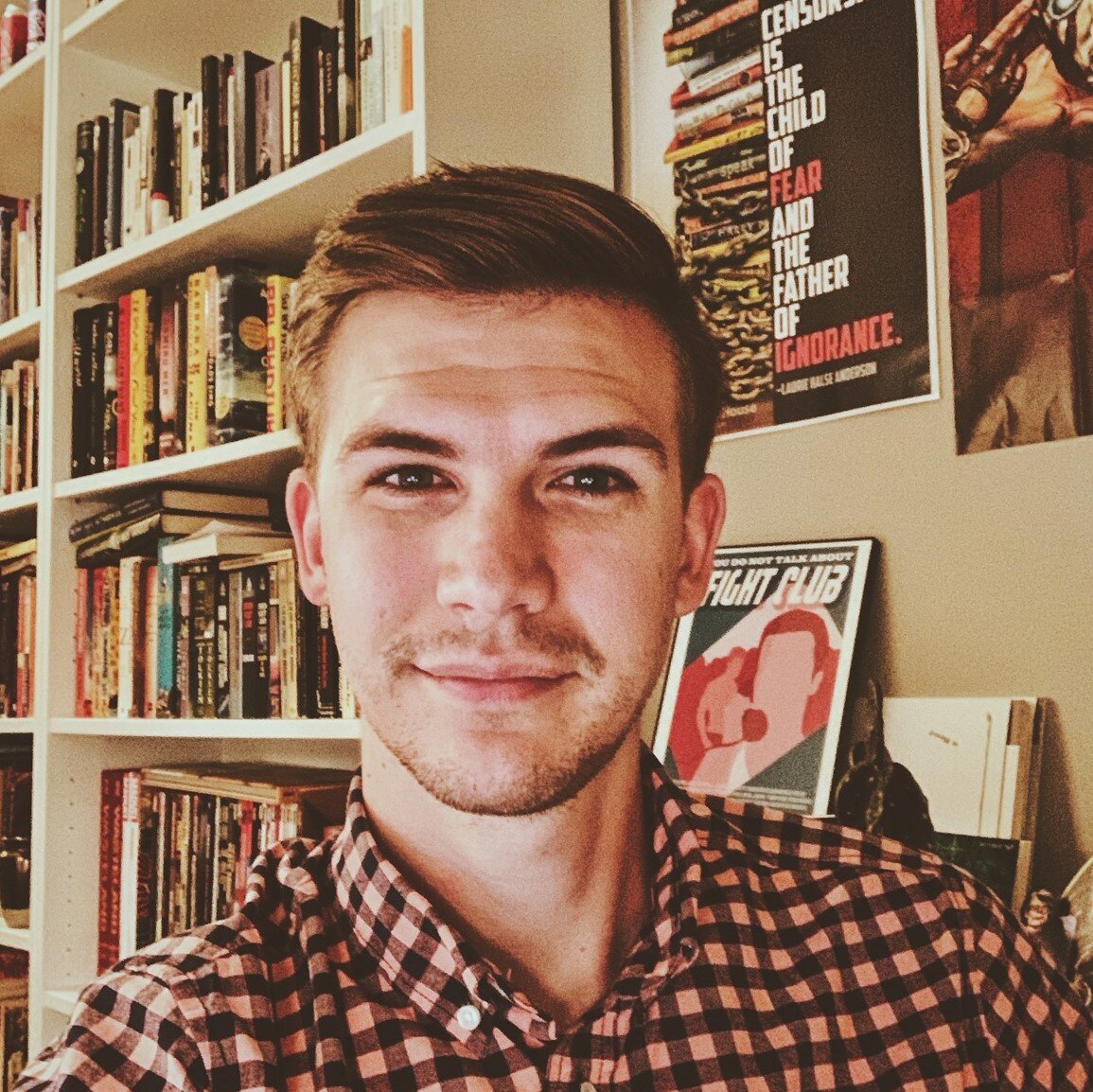
Ben’s love for horror began at a young age when he devoured books like the Goosebumps series and the various scary stories of Alvin Schwartz. Growing up he spent an unholy amount of time binge watching horror films and staying up till the early hours of the morning playing games like Resident Evil and Silent Hill. Since then his love for the genre has only increased, expanding to include all manner of subgenres and mediums. He firmly believes in the power of horror to create an imaginative space for exploring our connection to each other and the universe, but he also appreciates the pure entertainment of B movies and splatterpunk fiction.
Nowadays you can find Ben hustling his skills as a freelance writer and editor. When he’s not building his portfolio or spending time with his wife and two kids, he’s immersing himself in his reading and writing. Though he loves horror in all forms, he has a particular penchant for indie authors and publishers. He is a proud supporter of the horror community and spends much of his free time reviewing and promoting the books/comics you need to be reading right now!

